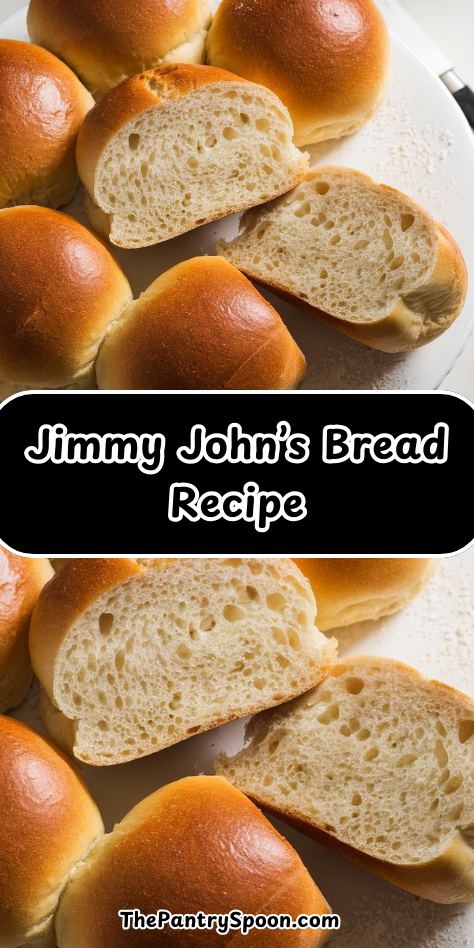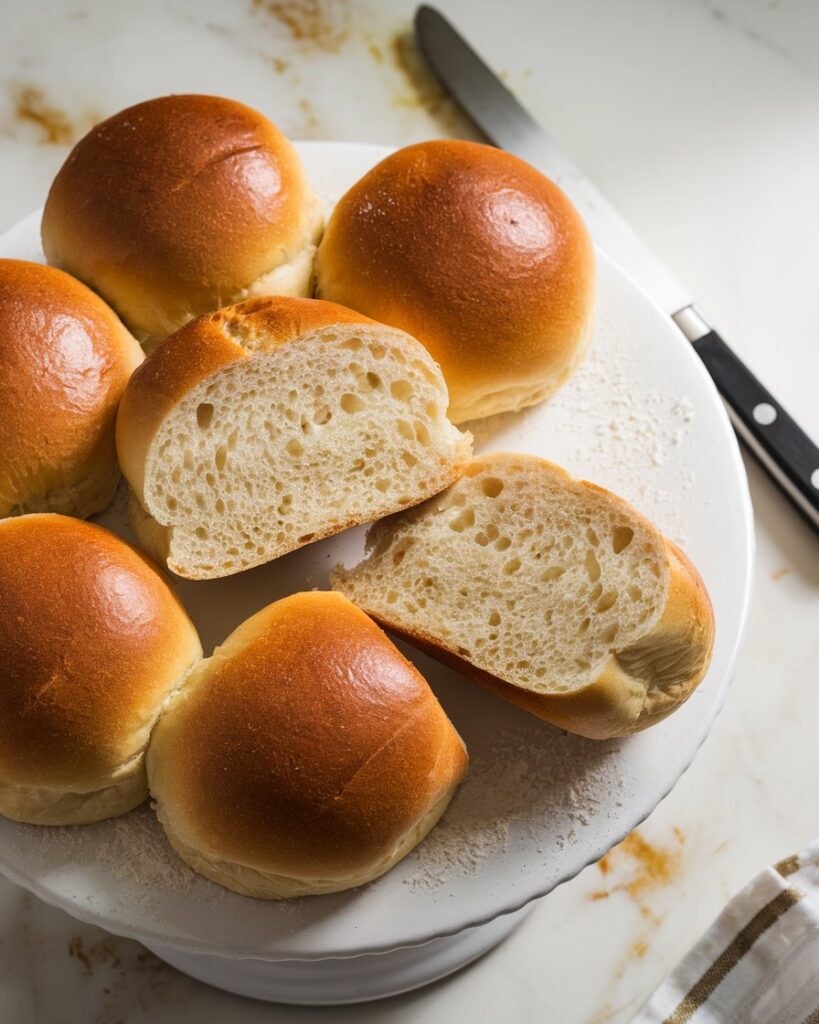Jimmy John’s sandwiches are beloved for their fresh-baked bread—soft in the center, slightly chewy, and perfect for holding all those flavorful fillings. This homemade version recreates that signature texture and taste, so you can build your own gourmet subs at home.
The best part is how simple the recipe is. With just a few pantry staples and a little patience for the dough to rise, you can enjoy warm, bakery-style sandwich bread anytime.
Why You’ll Love This Recipe
This bread is soft and tender but sturdy enough to hold generous sandwich fillings without getting soggy. It has a mild flavor that complements any topping, from classic turkey and cheese to bold Italian combos.
The recipe makes multiple rolls, so you can bake a batch on Sunday and enjoy fresh sandwiches all week. Plus, the smell of bread baking at home is worth making it for that alone.
What You’ll Need
- 1½ cups warm water (110°F)
- 1 tablespoon sugar
- 1 tablespoon active dry yeast
- 2 tablespoons vegetable oil
- 1 tablespoon salt
- 4 cups bread flour (plus more for kneading)
- Cornmeal for dusting baking sheet
Pro Tips
- Make sure your water is warm but not hot—too much heat can kill the yeast.
- Bread flour gives the rolls their chewy texture, but all-purpose flour will work in a pinch.
- Let the dough rise in a warm, draft-free spot for the best results.
- Score the tops before baking for a professional look.
- For a softer crust, brush the rolls with melted butter after baking.
Tools You’ll Need
- Large mixing bowl
- Measuring cups and spoons
- Wooden spoon or stand mixer with dough hook
- Baking sheet
- Kitchen towel or plastic wrap
- Sharp knife or bread lame
Substitutions & Variations
- Flour: Use half whole wheat flour for a heartier flavor.
- Oil: Swap vegetable oil for olive oil for a richer taste.
- Shape: Form into small rolls for sliders or longer baguettes for large subs.
- Seeds: Sprinkle sesame or poppy seeds on top before baking.
- Flavor boost: Add garlic powder or dried herbs to the dough for a savory twist.
Make-Ahead Tips
The dough can be made and refrigerated after the first rise for up to 24 hours. Let it come to room temperature before shaping and baking.
Baked rolls freeze well—wrap tightly and store for up to 2 months. Thaw at room temperature, then warm in the oven for a few minutes.
Step-by-Step Instructions
1. Activate the Yeast
In a large bowl, combine warm water, sugar, and yeast. Stir gently and let sit for 5–10 minutes, until foamy.
2. Add Oil and Salt
Stir in vegetable oil and salt. Mix well before adding the flour.
3. Add the Flour
Gradually add bread flour, one cup at a time, stirring until a shaggy dough forms.
4. Knead the Dough
Turn the dough out onto a floured surface. Knead for 8–10 minutes, until smooth and elastic, or use a stand mixer with a dough hook for 6–7 minutes.
5. First Rise
Place the dough in a lightly oiled bowl, cover with a towel, and let rise in a warm spot for 1–1½ hours, or until doubled in size.
6. Shape the Rolls
Punch down the dough and divide into 6–8 equal pieces. Shape each into a long roll about 8 inches in length.
7. Second Rise
Place rolls on a baking sheet dusted with cornmeal. Cover and let rise for another 30–40 minutes, until puffy.
8. Score and Bake
Preheat the oven to 375°F. Score the tops of the rolls with a sharp knife and bake for 18–20 minutes, or until golden brown.
9. Cool and Serve
Let rolls cool for at least 10 minutes before slicing. Use for your favorite sandwiches.
Leftovers & Storage
Store cooled bread in a paper bag or bread box at room temperature for up to 3 days. For longer storage, freeze as soon as cooled.
To refresh frozen bread, warm in a 350°F oven for 5–7 minutes.
Nutrition & Benefits
Homemade bread means no preservatives or additives, and you can control the amount of salt and type of flour. Using bread flour provides protein for better structure, while whole wheat flour adds fiber if you choose to substitute.
Freshly baked bread also offers better flavor and texture than store-bought rolls, making every sandwich feel special.
Recipe FAQs
1. Can I use instant yeast instead of active dry yeast?
Yes, you can add it directly to the flour without proofing, but the rise time may be slightly shorter.
2. How do I get a chewier crust?
Bake with a pan of water in the oven to create steam.
3. Can I double this recipe?
Yes, but you may need two baking sheets to avoid overcrowding.
4. Why did my bread come out dense?
It may be due to under-kneading or not allowing enough time for the dough to rise.
5. Is bread flour necessary?
It’s recommended for texture, but all-purpose flour will still produce good results.
Sandwich Bread Worth Baking at Home
Jimmy John’s bread has a loyal following for a reason—it’s soft, chewy, and the perfect base for a hearty sandwich. Making it yourself means you can enjoy that bakery-fresh taste anytime.
Once you try a sandwich with warm, homemade rolls, you may never go back to store-bought bread again. This is a recipe worth keeping in your rotation for lunches, gatherings, and weekend baking.





